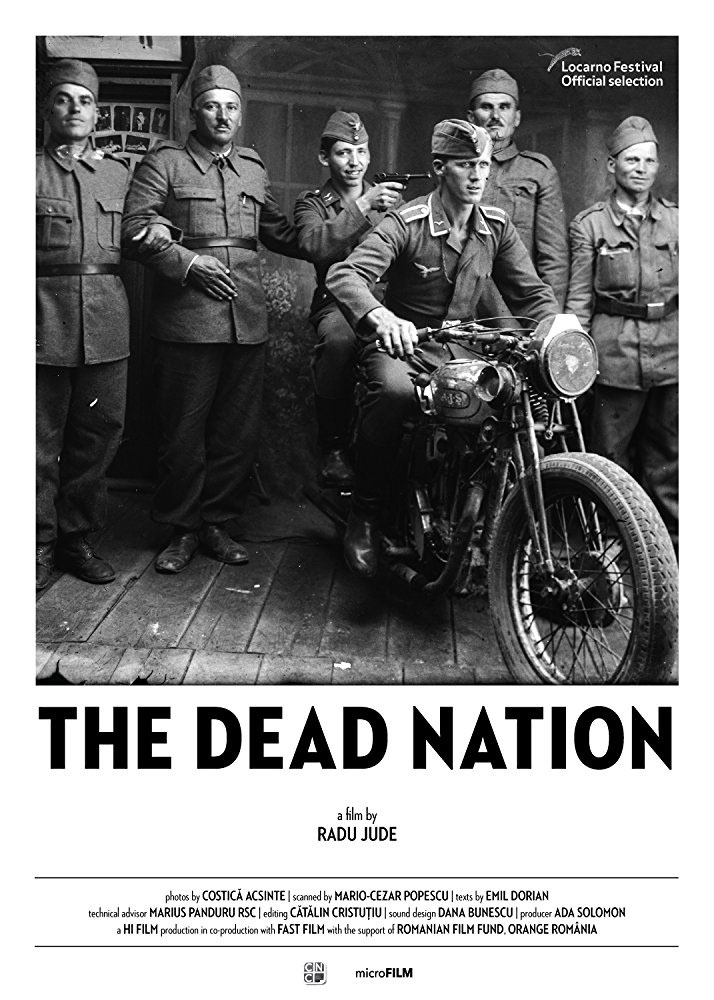
Povijest se u raspada već na početku, a ne tek s protokom vremena.
A film constructed using the opposition of what a huge collection of recently discovered glass-plate photographs from the 30's and 40's tell us about Romania and what they do not show.




Radu Jude's documentary on anti-semitism in 1930s-1940s Romania featured in the edgy Signs of Life section of the Swiss festival.
There are currently few more unpredictable careers in European cinema than that of Romania's Radu Jude, who takes a quietly stunning segue into non-fiction territory with his fifth feature-length work, The Dead Nation (Tara Moarta). An essayistic juxtaposition of historical materials from Jude's native land during the turbulent and bloody period from 1937 to 1946, it premiered at home in June before bowing internationally in the Signs of Life sidebar at the Locarno Film Festival. Dealing in an intelligent and original manner with anti-semitism and nationalistic propaganda in the context of "ordinary" folks' lives, it deserves wide exposure at documentary-oriented festivals and far beyond.
Best known for the multi-award-winning short The Tube With a Hat (2006) plus well-received period-set features Aferim! (2015) and Scarred Hearts (2016), Jude again draws on Romania's problematic, persecution-blighted past with The Dead Nation, subtitled Fragments of Parallel Lives.
As assembled by Jude's regular editor Catalin Cristutiu over a brisk, lean 83 minutes, the film's structure sensitively interweaves three main strands. The visuals are drawn from a cache of some 8,600 photographs taken at a professional studio in the town of Slobozia, in the country's southeast corner.
Costica Acsinte's 'Foto Splendid' company was evidently patronized primarily by the ordinary folk of this rural district, who pose in their workaday dress (farmers are often snapped in the company of their prized livestock) or strut in military uniforms.
Jude makes a superb, illuminating selection from this treasure trove. The limpid clarity of the glass-plate monochrome portraits, teeming with detail, contrasts with some ragged edges and other manifestations of historical wear-and-tear. During particularly fraught passages of Dorian's text Jude includes photographs which have decayed into eerie abstraction; showing appropriate restraint, he "illustrates" a section about the gassing of Jews with an interlude of uninterrupted blackness.
The soundtrack, meanwhile, features extracts from radio broadcasts and rabble-rousing patriotic anthems as Romania steadily tumbles into the Fascist abyss after Octavian Goga's rise to power in late 1937. We also hear — via Jude's own narration — extended quotations from the diaries of Dr. Emil Dorian, a Jewish doctor in Bucharest whose Romanian-language Jurnal was partially translated into English as The Quality of Witness.
The chronicles of Dorian (emphatically not to be confused with the better-known poet Emil Cioran) provide an eloquent eyewitness account of the daily reality for the capital's Jewish citizens. The net of oppression closes in; deportations to distant death-camps commence; the horrors of genocide gradually become apparent. Striking in its aesthetic purity, with beautiful images placed in the context of scarcely conceivable horrors, the film is a multi-dimensional snapshot of history. It offers an intense, sometimes poetic engagement with found materials, arranged in a manner which invites multiple interpretations.
"Human cruelty has never been so ferocious," opines Dorian, his mood oscillating between grim stoicism and suicidal despair as he copes with "an endless season whose days are gray, cold and bloodstained." The doctor's testimony is, as he puts it, "torn between poetry and reality," and while the English-language subtitles on the DCP shown at Locarno provided an approximate precis of his harrowing prose, it was apparent even to non-Romanian-speakers that much was being elided.
It is to be hoped that a more exhaustive subtitle file will be provided for the film's subsequent screenings. And there will surely be many. The Dead Nation is a disarmingly simple idea, executed with a bold artistic flair that straddles experimental and more traditional documentary techniques; Jude has pulled off that rare feat of crafting a highly accessible but complex, ambiguous and significant work of cinematic art. - Neil Young - www.hollywoodreporter.com/review/dead-nation-tara-moarta-1027947
















Nema komentara:
Objavi komentar